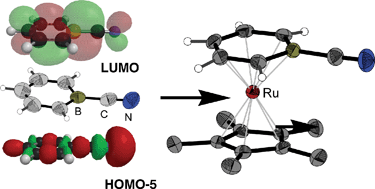
Read more for FREE until the 4th October at:
1-Borabenzonitrile (B-cyanoboratabenzene)
Ian A. Cade and Anthony F. Hill
Dalton Trans., 2011, Advance Article
DOI: 10.1039/C1DT10849B

Read more for FREE until the 4th October at:
1-Borabenzonitrile (B-cyanoboratabenzene)
Ian A. Cade and Anthony F. Hill
Dalton Trans., 2011, Advance Article
DOI: 10.1039/C1DT10849B
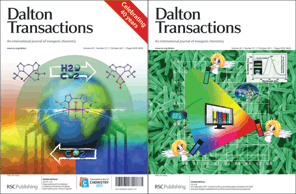
The outside cover features work by Jamali et al. on the preparation of two new bis(N-heterocyclic carbene) platinum(II) complexes, in which NHC rings are joined by a CH2 linker group.
Read more at:
Organoplatinum(II) complexes containing chelating or bridging bis(N-heterocyclic carbene) ligands: formation of a platinum(II) carbonate complex by aerial CO2 fixation
Sirous Jamali, Dalibor Milic, Reza Kia, Zahra Mazloomi and Hallimeh Abdolahi
Dalton Trans., 2011, 40, 9362-9365
DOI: 10.1039/C1DT10736D
The inside cover features research from Lin and co-workers on (Zn, Mg)2GeO4:Mn2+ submicrorods as promising green phosphors for field emission displays.
Read more about this HOT research area at:
(Zn,Mg2GeO4:Mn2+ submicrorods as promising green phosphors for field emission displays: hydrothermal synthesis and luminescence properties
Mengmeng Shang, Guogang Li, Dongmei Yang, Xiaojiao Kang, Chong Peng, Ziyong Cheng and Jun Lin
Dalton Trans., 2011, 40, 9379-9387
DOI: 10.1039/C1DT10673B
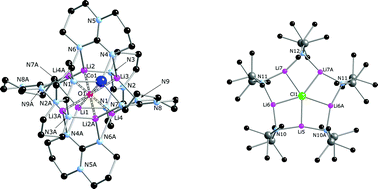
hexamethyldisilazide and [hpp]– = hexahydropyrimidopyrimidide, with MnCl2, CoCl2 or ZnBr2 resulting in the formation of the separated ion-pairs [MLi7(μ8-O)(μ,μ-hpp)6]+[A]–, which each consists of a {MLi7} oxo-centred cube structural motif (M = Mn, Co, Zn), with each face of the cube being bridged by an [hpp]– ligand. The method potentially could permit access to a range of cage compounds with magnetic properties that are influenced by μ-amido ligands rather than by μ-(O-donor) ligands.
Read more about cage compounds and serendipitous assembly for FREE until the 4th October at:
Synthesis and structure of cationic guanidinate-bridged bimetallic {Li7M} cubes (M = Mn, Co, Zn) with inverse crown counter anions
Daniel Woodruff, Michael Bodensteiner, Daniel O. Sells, Richard. E. P. Winpenny and Richard A. Layfield
Dalton Trans., 2011, Advance Article
DOI: 10.1039/C1DT10999E
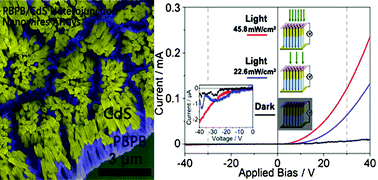
Read more for FREE until 24th September about these nanowire arrays at:
Synthesis and characterization of axial heterojunction inorganic–organic semiconductor nanowire arrays
Nan Chen, Xuemin Qian, Haowei Lin, Huibiao Liu, Yongjun Li and Yuliang Li
Dalton Trans., 2011, Advance Article
DOI: 10.1039/C1DT10926J
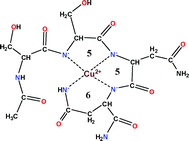
In this HOT article, Kállay and co-workers report on the synthesis and study of the copper complexes of rIAPP fragments. First of all the terminally protected tridecapeptide rIAPP(17–29) was investigated in which the potentially metal binding amino acid residues are located in the N-terminus. The surprisingly high affinity of this peptide towards complexation with copper(II) promoted a systematic study on the shorter fragments including rIAPP(17–22) (Ac-VRSSNN-NH2), rIAPP(17–20) (Ac-VRSS-NH2), its mutant peptides (Ac-VASSNH2 and Ac-VRAA-NH2) and rIAPP(19–22) (Ac-SSNN-NH2). The peptides can be classified into two different categories: (i) the tetrapeptides Ac-VRSS-NH2, Ac-VASS-NH2 and Ac-VRAA-NH2 can interact with copper(II) only under strongly alkaline conditions (pH > 10.0) and the formation of only one species with four amide nitrogen coordination can be detected; (ii) the peptides Ac-VRSSNNLGPVLPP-NH2, Ac-VRSSNN-NH2 and Ac-SSNN-NH2 can form complexes above pH 6.0 with the major stoichiometries [CuH−2L], [CuH−3L]− and [CuH−4L]2−. The data supports the idea that rIAPP(17–29) can interact with copper(II) ions under physiological conditions and the SSNN tetrapeptide fragment can be considered as the shortest sequence responsible for metal binding.
Read more for FREE until 21st September at:
Copper(II) complexes of rat amylin fragments
Csilla Kállay, Ágnes Dávid, Sarolta Timári, Eszter Márta Nagy, Daniele Sanna, Eugenio Garribba, Giovanni Micera, Paolo De Bona, Giuseppe Pappalardo, Enrico Rizzarelli and Imre Sóvágó
Dalton Trans., 2011, Advance Article
DOI: 10.1039/C1DT10835B
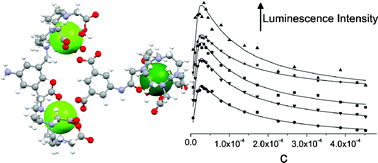
This article is part of a forthcoming themed issue on self assembly in inorganic chemistry, with Guest Editors Paul Kruger (University of Canterbury) and Thorri Gunnlaugsson (Trinity College Dublin).
Read more for FREE about these developments in self assembly at:
Self-assembly between dicarboxylate ions and a binuclear europium complex: formation of stable adducts and heterometallic lanthanide complexes
James A. Tilney, Thomas Just Sørensen, Benjamin P. Burton-Pye and Stephen Faulkner
Dalton Trans., 2011, Advance Article
DOI: 10.1039/C1DT11103E
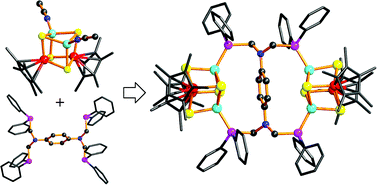
Read more for FREE until 25th August 2011 at:
Assembly of bicyclic or monocyclic clusters from [(η5-C5Me5)2Mo2(µ3-S)4(CuMeCN)2]2+ with tetraphosphine or N,P mixed ligands: syntheses, structures and enhanced third-order NLO performances
Zhi-Gang Ren, Sha Sun, Min Dai, Hui-Fang Wang, Chun-Ning Lü, Jian-Ping Lang and Zhen-Rong Sun
Dalton Trans., 2011, Advance Article
DOI: 10.1039/C1DT10685F
In this HOT article, Harder and Spielmann describe some alkaline earth metal aminoborane ligands and their thermal behaviour. By using their new ditopic bis(ketiminate) ligands, they have been able to synthesize binuclear complexes that are pre-organised for constructing bridging aminoborane oligomers as ligands. By heating the initial non-bridging complexes, the aminoboranes couple and lose H2. The loss of hydrogen from aminoborane ligands has practical relevance to hydrogen storage chemistry and also to the fields of solid state and metal-organic chemistry.
Read more for FREE until 25th August 2011 about these interesting aminoborane ligands at:
Binuclear magnesium amidoborane complexes: characterization of a trinuclear thermal decomposition product
Jan Spielmann and Sjoerd Harder
Dalton Trans., 2011, Advance Article
DOI: 10.1039/C1DT10694E
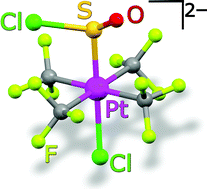
Read the full article for FREE at:
Efficient and stereoselective syntheses of isomeric trifluoromethyl-platinum(IV) chlorides
Sonia Martínez-Salvador, Pablo J. Alonso, Juan Forniés, Antonio Martín and Babil Menjón
Dalton Trans., 2011, Advance Article
DOI: 10.1039/C1DT10557D
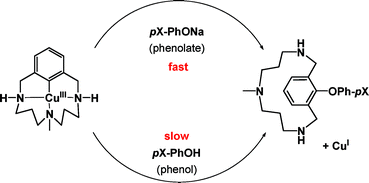
Further catalysis reading available for FREE at:
Aryl–O reductive elimination from reaction of well-defined aryl–CuIII species with phenolates: the importance of ligand reactivity
Alicia Casitas, Nikolaos Ioannidis, George Mitrikas, Miquel Costas and Xavi Ribas
Dalton Trans., 2011, Advance Article
DOI: 10.1039/C1DT10428D